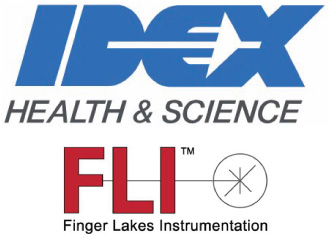
C Mount

50mm

35mm

4/3

Micro 4/3
Merely to say that a lens is "C-mount" says very little about the lens' intended use. C-mount lenses have been made for many different formats.
C-mount is a system heavily used in the photograph industry, and thus, its applications spread a very wide span. Lens types from macro to telephoto are applicable, with a large range of apertures, focal lengths, and options. The ability to use lenses with mounts beyond what is seen here can come through c-mount connectors, as the range of use C-mount gets has introduced interest in making it even more universal.
Micro Four Thirds (MFT) refers to the brand name for this family of lens. "Four thirds" also refers to the sensor format the lens is designed for (4/3" with a 4:3 aspect ratio).
MFT shares the original image sensor size and specification with the Four Thirds system, designed for DSLRs. Unlike Four Thirds, the MFT system design specification does not provide space for a mirror box and a pentaprism, which facilitates smaller body designs and a shorter flange focal distance, and hence smaller lenses. The MFT system design specifies a bayonet type lens mount with a flange focal distance of 19.25 mm.
Micro 4/3 cameras can still use older Four Thirds lenses, but an adapter is needed to extend the length from rear element to the sensor.
Like Four Thirds and C-mount, Micro Four Thirds is title for the adapter which is used. No specification of the lens type is defined by its name. Zoom, fixed focal, macro, fisheye, prime, 3D and pinhole lens varieties are produced.
Four Thirds was an initiative by multiple optics companies in the early 2000's to produce universally cooperating products. With this, came a large selection of Four Thirds cameras and lenses. The lenses are similar to c-mount in that Four Thirds doesn't really describe anything specific about the lens. Four Thirds lenses are available in as many different optical configurations as exist, including macro, telephoto, fisheye and prime.
The Four Thirds lens mount is specified to be a bayonet type with a flange focal distance of 38.67 mm.
The important quality of Four Thirds lenses is that they are first and foremost designed for operation with Four Thirds systems. Particularly, this means that the lenses maximum sensor dimensions are 4/3" with a 4:3 aspect ratio. A Four Thirds lens will not work properly on a full frame sensor, or any sensor larger than 4/3".
35 mm lens refers to the focal length of the device. The focal length influences the field of view of the images captured inversely. Thus, the 35mm lenses will produce a wider field of view than the 50mm.
The 35mm lens is also a prime lens, meaning the focal length is only adjustable in small increments to correct focus. The benefit of this is that the image quality is significantly higher than in adjustable focus lenses because the design is simple and doesn't block light with unnecessary parts.
50mm lenses refers to the focal length of the device. The focal length influences the field of view of the images captured inversely. Thus, the 50mm lenses will produce a narrower field of view than the 35mm. With a 50mm focal length, these lenses are capable of producing images with a field of view very similar to the human eye.
50mm lenses are prime lenses, meaning they have a roughly fixed focal length. Most lenses will have a small range for focusing the image properly, but often not more than +-3mm.

Lens Selection
An important aspect of lens selection is the intended use. Low light situations require large aperture lenses, while day time or well illuminated scenes do not require large aperture. In these conditions it is more likely to use smaller apertures than the maximum size.
For astrophotography, it is important to get a lens that supports a quite large aperture. This quality can be noted by a reported f-ratio around or below f/2. So, the closer to f/1 a lens can operate, the more light and more information can be recorded.
A lens' ability to magnify is significant to an image as well. Prime lenses lack dynamic magnification, however the image is often better than dynamic zoom lenses due to the internal mechanisms of the dynamic lens reducing the possible light capture.
Some lenses, such as fisheye, will increase the field of view of the lens, at the cost of distortion in the image.
It is also important to locate a lens that works with the sensor you need. If the lens is meant for sensors smaller than the sensor its used with, vignette will appear because the lens can't fill the sensor's area.
The best advice for lenses is to research what other members of your community use for the use you intend. Try lenses, if possible, and understand what qualities are important to you, such as autofocus, fixed-focus, telephoto, fisheye, or macro lenses.
There exists a large range of lenses with many possibilities. Chose a lens that works best for your needs and your sensor needs, then focus on connecting it to your camera. The following sections discusses FLI supported mounts, with which you can connect most modern lenses on the market.

Finger Lakes Instrumentation, a division of IDEX Health & Science LLC
1250 Rochester St.
Lima, New York 14485
1250 Rochester St.
Lima, New York 14485
Phone: 585-624-3760
Email: IHSKeplerSupport@IdexCorp.com
Web: www.flicamera.com
Email: IHSKeplerSupport@IdexCorp.com
Web: www.flicamera.com
©2023 IDEX Health & Science LLC

F Mount
F Mount is the mount type on Kepler cameras. F Mount describes the mounting mechanism used to attach the lens to the camera. The lenses come in a wide variety, so the correct lens for any use should be available.
